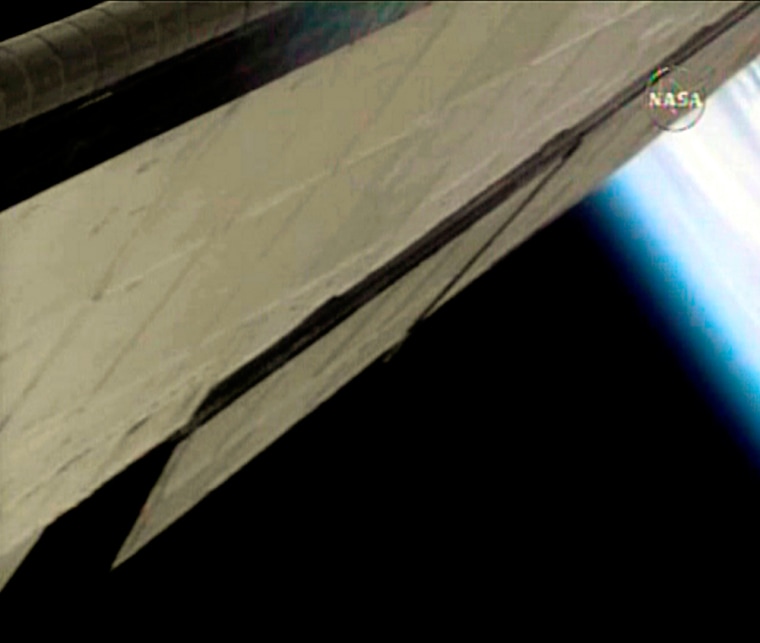A metal clip broke off Discovery's rudder and four hours passed before the seven space shuttle astronauts got the good news: The missing part poses no danger for Saturday's re-entry and landing.
Ever since the Columbia tragedy five years ago, any shuttle part seen floating away in orbit gets NASA's attention — fast.
Mission Control reassured commander Mark Kelly and his crew on Friday that their spaceship was safe for coming home, and that the missing clip — one of three that hold down thermal blankets on the rudder and speed brake — would not impact anything.
A protrusion in the same area at the tail, which was reported by the astronauts around the same time, also was found to be harmless. The angle of the lighting and the rudder's position made the so-called bump look strange when, in fact, it was exactly how it looked at liftoff, Mission Control said.
During a pair of broadcast interviews on this Friday the 13th, Kelly acknowledged that he and his crew were worried at first. The clip broke loose during a routine checkout of the flight systems needed for Saturday's descent.
He said he was impressed at how quickly engineers were able to resolve the issues, and noted that the zoom-in photo of the fleeing clip, taken by one of his crewman, helped in the analysis.
"We're no longer concerned," Kelly said.
Space shuttles have returned to Earth in the past with clips missing from the rudder, which splits in half to serve as a speed brake. The thermal blankets protect that area from the intense heat of liftoff.
Slideshow 12 photos
Month in Space: January 2014
Following Columbia's destruction during re-entry in 2003, the Air Force went back through its radar images from the flight and found a small object in orbit with the space shuttle. Accident investigators concluded it almost certainly was a fragment of a heat panel from Columbia's gashed wing.
Astronaut Garrett Reisman, meanwhile, returning after three months aboard the international space station, said he is "cautiously optimistic" that his readaptation to gravity won't be as bad as some have experienced, and that he may not suffer as many balance problems because he's short.
"My sensory organs are a little closer to my center of gravity, and my heart has a little less distance to pump to my brain," he said. "I've been waiting my whole life, and I think finally this being short is going to come in handy for once."
Reisman said he is looking forward to sleeping in his own bed and using his own toilet. He said in an earlier interview that his last month at the space station was difficult because of a broken toilet and preparations for Discovery's arrival.
The toilet was fixed after Discovery delivered a new pump along with the prime payload, a billion-dollar Japanese lab.
Reisman woke up on his 94th day in space to a song requested by his wife, Simone Francis, and beamed up by Mission Control: "Baby Won't You Please Come Home" by Louis Prima and Keely Smith.
"A special good morning to Simone, my favorite earthling," Reisman called down. "Get ready doll face, Discovery is coming home."

